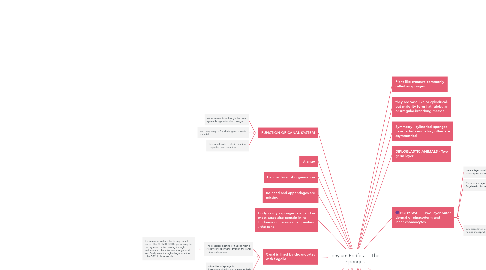phylum Porifera - The sponges
by Ravi Thakur


1. FUNCTION OF CANAL SYSTEM
1.1. Water current flow through the canal system brings in food and oxygen
1.2. and carry away co2 and nitrogenous waste material
1.3. thus canal system help in nutrition, respiration and excretion
2. strange
3. Plant like creature commonly called as sponges
4. they are vase like or cylindrical, but majority form flat, globular or irregular,branching masses
5. Symmetry - cylindrical sponges have radial symmetry , other are asymmetrical
6. DIPLOBLASTIC ANIMALS - Two germ layer
7. Cellular level of organisation
8. no head and appendages are missing
9. BODY WALL - Two layer outer dermal or pinacoderm and inner choanocytes .
9.1. dermal layer consist of flat cells called pinacocytes and oval porocytes
9.2. Choanocytic layer consists of characteristic flagelated collar cells or choanocytes
9.3. b/w these layers a gelatinous material named mesophyl or mesenchyme
9.3.1. It contain numerous free amoeboid cells, AMOEBOCYTES, of several kinds such as
9.3.1.1. SCLEROBLASTS
9.3.1.2. SPONGIOBLASTS
9.3.1.3. THESOCYTES
9.3.1.4. PHAGOCYTES
9.3.1.5. TROPHOCYTES
9.3.1.6. ARCHAEOCYTES
9.3.1.7. COLLENCYTES
9.3.1.8. CHROMOCYTES AND POROCYTES
10. body cavity - spongeocoel and in most cases also contain in its thickness numerous small cavities , the canal
11. Canal is lined by choanocytes with flagella .
11.1. The ceaseless beating of flagella main a steady current of water through the canal in body of sponge
11.1.1. the current of water enter through small pores , the DERMAl OSTIA ,performing the porocytes and after passing through various canal ,the enter into spongeocoel and finally leave through a larger aperture , the OSCULUM or oscula
11.2. all cavities of sponge is intercommunicating and are collectively referred as canal system
12. ENTIRE BODY CONTAIN PORES HENCE CALLED PORIFERA
13. 3 MAIN TYPE OF CANAL SYSTEM
13.1. 1. SIMPLEST : Asconoid
13.1.1. LEUCSOLENIA
13.2. 2. SIMPLE : Syconoid
13.2.1. SYCON
13.3. 3.COMPLEX : LECONOID
13.3.1. SPONGILLA
14. SKETETON : internal skeleton consist of tiny calcareous or siliceous spicules secreted by scleroblast
15. DIGESTIVE TRACT : mouth and digestive system is lacking
15.1. nutrition is holozoic
15.2. digestion is intracellular and occur in food vacuoles as in protozoan
15.3. sponges are filter feeder or suspension feeders
15.4. food is stored in the mesenchymal cell , the THESOCYTES
15.5. PLANKTON is an important food source for sponges
16. CIRCULATION ; distribution of food from ingesting cells to other is brought about by wandering amoeboid cells, the TROPHOCYTES , of mesenchyma
17. RESPIRATION AND EXCRETION BY DIFFUSION . SPONGES ARE ammoniotelic animal
18. only animal without NERVOUS SYSTEM AND SENSE ORGAN
19. REPRODUCTION : is SEXUAL AND ASEXUAL
19.1. BY GEMMULES IN ASEXUAL REPRODUCTION
19.2. SEXUAL REPRODUCTION involves formation of ova and spermatozoa
19.2.1. these are develop from ARCHEAOCYTES OR CHOANOCYTES OR BOTH
19.2.2. FERTILISATION IS INTERNAL
19.3. MOST of sponges are HERMAPHRODITES
20. DEVELOPMENT : ZYGOTE develops into a new sponge by HOLOBLASTIC SEGMENTATION
20.1. life cycle involve a free swimming larva
20.1.1. AMBHIBLASTULA in SCYPHA
20.1.2. PARENCHYMULA in LECOSOLENIA for dispersal

